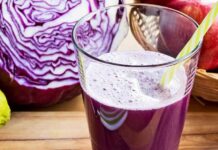
Fat – healthy or unhealthy? We all know eating too much can be bad for us, but did you know too little fat can leave you deficient in nutrients and energy too? Nutritionist Kerry Torrens explains
What Is Fat And Why Is It Important?
Fat, like carbohydrates and protein, is a macronutrient needed by the body to build cell membranes, make nerve tissue and hormones, and aid the absorption of fat-soluble nutrients, including vitamins A and D. Our bodies use fat as energy and store any excess for future use; this stored fat acts as an insulator and helps cushion vital organs, bones and other tissues, protecting them from damage.
Although eating too much fat can be unhealthy, there are certain types of fat we must get from our diet because they’re essential to health.

What Are The Different Types Of Fat And What Benefits Do They Have?
Broadly speaking, there are three main types of fat and each plays a different role in the body. For us to understand how these fats function and what benefits they give, we need to first consider their structural differences – so here’s the science bit!
All fats are made up of fatty acids attached to a glycerol molecule, but they vary in size (number of carbons in a chain) and structure (number or lack of double hydrogen bonds).
Saturated Fats
This is the fat we’ve learnt to fear most. Found in red meat, butter, cheese, ghee, burgers and sausages, as well as coconut and palm oils, a diet high in these fats has, for a long time, been thought to play a part in the development of obesity, heart disease and type 2 diabetes.
With varying chain lengths (long, medium and short) and no double hydrogen bonds, saturated fats are more stable at high temperatures making them useful for roasting and frying. Those referred to as medium chain, as well as some shorter-chain saturated fats, behave differently to the long-chain variety, especially when it comes to heart health, making them less detrimental and, potentially, even helpful.
It’s the structural differences between these medium- and shorter-chain fats that allow them to be digested and metabolised differently to provide energy.
Sources of medium-chain fats (6-12 carbons long) can be found in coconut oil, milk fat and palm oil, while short-chain fatty acids (2-5 carbons long) are found in butter – although these are largely by-products of fibre fermentation in our gut. Most of the saturated fat we eat tends to be the long-chain (over 13 carbons long) variety.
Unsaturated Fats
These are divided into mono-unsaturated (one double bond) and poly-unsaturated fat (multiple double bonds).
Mono-unsaturated fats (MUFAs) are found in oils, such as olive, groundnut and cold-pressed rapeseed; nuts, including almonds, cashews, hazelnuts, peanuts and pistachios; as well as fruit, such as avocados. They’re considered good for heart health and for balancing cholesterol levels, and since they’re less susceptible to damage when heated, they’re useful for cooking.
Polyunsaturated fats (PUFAs) have additional structural differences which determine whether they’re an omega-3 or omega-6 fat. Omega-6 is found in corn and sunflower oils, as well as nuts and seeds, including pine nuts, sesame and sunflower seeds. Omega-3 is plentiful in oily fish, such as salmon, herring and sardines, as well as walnuts and chia and flaxseeds.
These PUFAs are regarded as ‘essential’ oils because we cannot make them in the body, so we need to get adequate amounts from the foods we eat. Both play important roles, supporting the heart, brain and our hormonal health. Omega-3 fats may also offer metabolic benefits, which may be useful if you’re looking to lose weight.
However, it’s worth noting that the double-bond structure of these fats makes them more vulnerable to damage, especially when heated at high temperatures.
Trans Fats
These man-made fats may start off as unsaturated but chemical changes during processing make them behave more like a saturated fat, only worse because the body doesn’t recognise them. They’re usually found in processed foods (such as margarines) and takeaways, and are the worst type of fat for increasing the risk of heart disease and adversely affecting the brain and nervous system.
You can minimise your intake of trans fats by cooking from scratch and checking labels for ‘hydrogenated’, ‘partially hydrogenated’ and ‘semi-hydrogenated’ vegetable fats or shortening. The UK Government has encouraged food manufacturers to minimise the trans fats in their products, although they’re not currently banned from the UK market.
Although we typically think of foods in terms of one particular type of fat, it’s important to remember that most foods contain a variety of fats. Take olive oil, it’s a valuable source of MUFAs but also contains saturated fat and PUFAs in smaller amounts. Likewise, animal foods are rich in saturates but may also contain high proportions of MUFAs and PUFAs. This makes defining a fatty food as ‘healthy’ (because it provides unsaturated fats), or ‘unhealthy’ (because it’s a source of saturated fat) inherently difficult.
What Are The Signs That I’m Not Eating Enough Fat?
You may start to notice drier skin, perhaps some hair loss, a weakened immune system and signs of vitamin deficiencies. This is because low intakes of fat limit the amount of fat-soluble vitamins A, D, E and K and the essential omega-3 and omega-6 fats absorbed from our diet.
This group of vitamins and essential fats play an essential role in maintaining our vision, skin, immune system, hormone balance, bone health and nervous and reproductive systems. Women who don’t get enough fat in their diet and have a body fat composition below optimum, may observe disruptions to their menstrual cycle and may even experience fertility issues.

How Much Fat Should I Eat Per Day?
UK guidelines recommend that our total fat intake should not exceed 35% of our total daily energy (calorific) needs with the maximum for saturated fats being 11%. For the average, moderately active, adult female this equates to 70g of total fat and 20g of saturated fat. The UK Government also recommends that no more than 5g per day should be from trans fats.
Currently there are no specific recommendations for unsaturated fat intake. For omega-3, the guidance is that we should aim to eat two portions of fish per week of which one portion (140g) should be oily. When it comes to omega-6, most of us get adequate amounts from our diets anyway.
How Will I Know How Much Fat Is In A Packaged Product?
It’s a legal requirement in the UK for the amount of total and saturated fat per 100g (food) or 100ml (drink) to be stated on the nutrition label, located on the back or side of the packaging. This information may help you choose between products and allows you to keep a check on the foods you’re eating that may be high in fat.
Are There Downsides To Eating Too Much Fat?
While fat is more calorific than either carbs or protein (9 kcals/g compared with 4 kcals/g), it tends to be more satiating than eating carbs – which makes any direct correlation with weight gain difficult to confirm.
Nevertheless, it’s important for our weight and general health that we don’t eat too much fat. By reducing the unhealthy, long-chain saturated and trans fats in our diet and replacing some of these with healthier unsaturated fats, we’re likely to achieve a better balance for our heart, weight and overall health.
Final Thoughts…
Eating the right kinds of fat can help to protect us from heart and circulatory problems, but too much of the wrong type, such as the trans fats in processed foods, may be detrimental. However, although we tend to talk about nutrients in isolation, we don’t consume them that way – the foods we eat are more than a sum of their parts.
Take dairy, for instance. Recent studies have suggested that dairy products high in saturated fat – such as cheese, kefir and yogurt – may not be as harmful as we once thought, and in fact may even have a positive effect on our health. This may be because nutrients, including calcium, and the process of fermentation, may moderate the effect of saturated fat.
Plus, even when we cut down on one macronutrient, we inevitably increase our intake of another, so it’s what we replace the fat with which will determine how positive the change. Swapping out fats for ultra-processed, carb-rich and sugary foods may pose a greater risk to health. Conversely, if we reduce saturated fat and replace it with PUFAs rather than carbs, this may benefit our heart health.
Some plant oils (PUFAs), such as corn and sunflower oils, contain little in the way of omega-3 fatty acids, so if you’re a vegetarian who can’t eat oily fish, for example, you may have to supplement the heart-protective fats in your body.
In conclusion, follow nutritional guidelines and focus on the balance of your diet, ensuring it is made up of minimally processed foods with a variety of fats, lean protein and slow-releasing carbs.
Important Notice: This article was originally published at www.bbcgoodfood.com by Kerry Torrens – Nutritionist where all credits are due.
Disclaimer
The watching, interacting, and participation of any kind with anything on this page does not constitute or initiate a doctor-patient relationship with Dr. Farrah™. None of the statements here have been evaluated by the Food and Drug Administration (FDA). The products of Dr. Farrah™ are not intended to diagnose, treat, cure, or prevent any disease. The information being provided should only be considered for education and entertainment purposes only. If you feel that anything you see or hear may be of value to you on this page or on any other medium of any kind associated with, showing, or quoting anything relating to Dr. Farrah™ in any way at any time, you are encouraged to and agree to consult with a licensed healthcare professional in your area to discuss it. If you feel that you’re having a healthcare emergency, seek medical attention immediately. The views expressed here are simply either the views and opinions of Dr. Farrah™ or others appearing and are protected under the first amendment.
Dr. Farrah™ is a highly experienced Licensed Medical Doctor certified in evidence-based clinical nutrition, not some enthusiast, formulator, or medium promoting the wild and unrestrained use of nutrition products for health issues without clinical experience and scientific evidence of therapeutic benefit. Dr. Farrah™ has personally and keenly studied everything she recommends, and more importantly, she’s closely observed the reactions and results in a clinical setting countless times over the course of her career involving the treatment of over 150,000 patients.
Dr. Farrah™ promotes evidence-based natural approaches to health, which means integrating her individual scientific and clinical expertise with the best available external clinical evidence from systematic research. By individual clinical expertise, I refer to the proficiency and judgment that individual clinicians acquire through clinical experience and clinical practice.
Dr. Farrah™ does not make any representation or warranties with respect to the accuracy, applicability, fitness, or completeness of any multimedia content provided. Dr. Farrah™ does not warrant the performance, effectiveness, or applicability of any sites listed, linked, or referenced to, in, or by any multimedia content.
To be clear, the multimedia content is not intended to be a substitute for professional medical advice, diagnosis, or treatment. Always seek the advice of your physician or other qualified health providers with any questions you may have regarding a medical condition. Never disregard professional medical advice or delay in seeking it because of something you have read or seen in any website, video, image, or media of any kind. Dr. Farrah™ hereby disclaims any and all liability to any party for any direct, indirect, implied, punitive, special, incidental, or other consequential damages arising directly or indirectly from any use of the content, which is provided as is, and without warranties.








